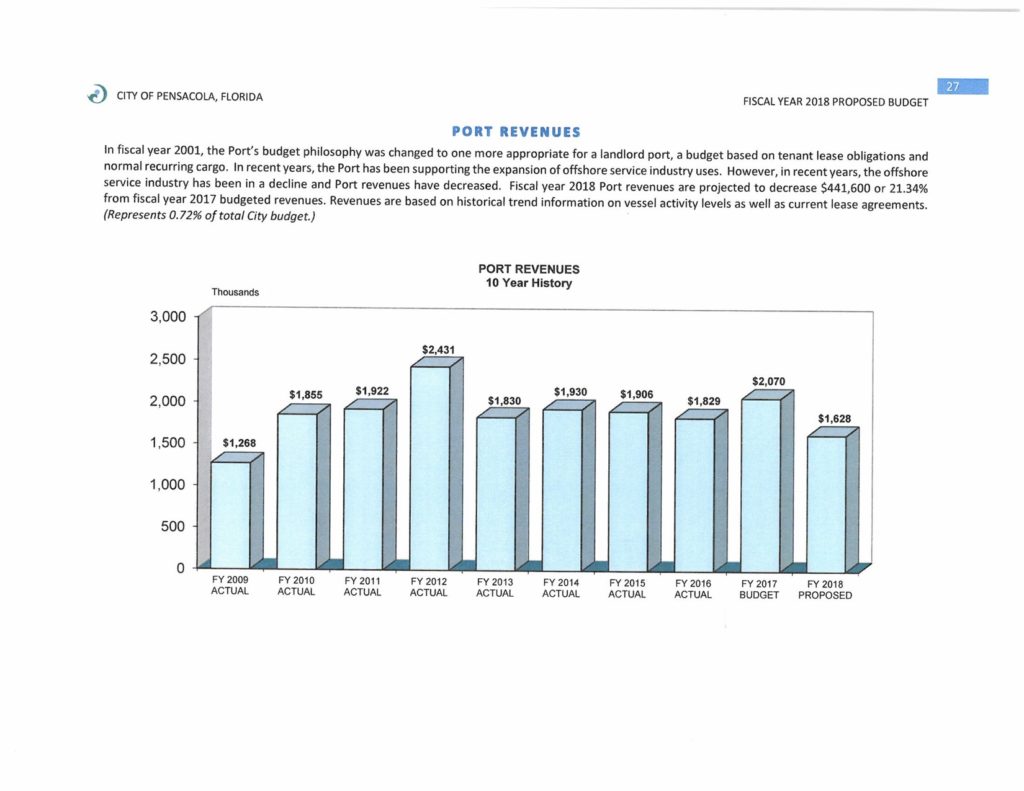
The Port of Pensacola’s four major revenue sources dropped nearly 30 percent from FY 2012 to FY 2016, according the city’s budget documents. The actual revenue figures for FY 2017 have not been posted by the city so we don’t know if the port made its revenue budget.
The three of the major revenue sources are a function of ship traffic at the port – Wharfage (-19.7%), Storage (-32.6%) and Dockage (-37.7%). The top revenue source is property rental fees, which dropped 24.7% from FY 2012-2016.
| Â FY | Wharfage | Storage | Dockage | Rentals | Total |
| 2012 | 398,441 | 194,977 | 799,392 | 805,132 | 2,197,942 |
| 2013 | 368,119 | 221,366 | 348,338 | 667,146 | 1,604,969 |
| 2014 | 393,965 | 232,946 | 635,847 | 409,048 | 1,671,806 |
| 2015 | 289,504 | 240,969 | 545,597 | 588,584 | 1,664,654 |
| 2016 | 319,874 | 131,406 | 498,016 | 606,510 | 1,555,806 |
| Decrease | -19.7% | -32.6% | -37.7% | -24.7% | -29.2% |
The FY 2018 proposed budget estimates port revenues will dropped another 21.4 percent this next year. If the City meets that FY 2018 budget estimate, the port revenues will have fallen $803,000 since FY 2012. Yikes!
It’s difficult to understand why Mayor Hayward isn’t fighting to move the fish hatchery to the Port of Pensacola. The Florida Fish & Wildlife Commission could save $9 million on constructing a new building and instead pay rental fees to the port.




